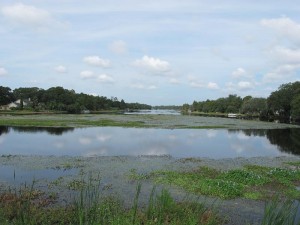The EPA has approved the Florida Department of Environmental Protection’s (FDEP) rules to protect Florida’s waterways from excess nitrogen and phosphorus. These pollutants, called nutrients, cause algal blooms, contaminate drinking water supplies and are among the largest contributors to water quality problems in Florida. These rules establish numeric limits on the amount of nutrient pollution allowed in statewide springs, lakes, streams and some estuaries. Following a thorough review of the state’s adopted rules and supporting documents, EPA determined they are consistent with the requirements of the Clean Water Act and applicable federal regulations for the water bodies they cover. “Nutrient pollution threatens human health and the environment, hurts businesses, costs jobs, reduces property values, and otherwise impacts the quality of life for all Floridians,” said EPA Regional Administrator Gwen Keyes Fleming. “Clean water is vital for Florida and EPA commends FDEP for taking this significant step towards protecting and restoring water quality across the state.”The EPA determined FDEP’s new method of deriving numeric limits for the amount of nutrient pollution is technically and scientifically sound, and more effective and efficient than the previous narrative approach.
“Nutrient pollution threatens human health and the environment, hurts businesses, costs jobs, reduces property values, and otherwise impacts the quality of life for all Floridians,” said EPA Regional Administrator Gwen Keyes Fleming. “Clean water is vital for Florida and EPA commends FDEP for taking this significant step towards protecting and restoring water quality across the state.”The EPA determined FDEP’s new method of deriving numeric limits for the amount of nutrient pollution is technically and scientifically sound, and more effective and efficient than the previous narrative approach.
The numeric limits for nitrogen and phosphorus in springs, lakes and streams (outside South Florida) are virtually identical to those in EPA’s 2010 rule. FDEP also has adopted additional biological and chemical indicators to identify and prevent nutrient pollution in streams and to protect sensitive downstream waters. This combination of numeric limits with biological indicators was used in to determine the Santa Fe River was impaired and needed restoration.FDEP’s rules are intended to improve water quality and protect public health, aquatic life and the long-term recreational uses of Florida’s waters, which are a critical part of the state’s economy. The Clean Water Act envisions states being primarily responsible for protecting water quality, and EPA fully supports Florida’s efforts to implement its own water quality standards.
However, in accordance with a 2009 consent decree with the Florida Wildlife Federation – and because the state’s rules do not cover certain waters – EPA is also proposing two federal nutrient rules. One rule proposes numeric limits on the amount of nutrient pollution allowed in Florida’s estuaries and coastal waters, as well as streams in South Florida, which were not addressed in Florida’s rules. The other clarifies some provisions in the 2010 rule EPA establishing numeric limits on the amount of nutrient pollution allowed in Florida’s inland waters. These provisions were remanded to EPA for further action by the District Court.EPA welcomed public comment on its proposed rules and hosted public information Open House sessions in Tampa on January 17 and 18, as well as three public webinars January 22 – 24, 2013.
For more information, please visit EPA’s Water: Regulatory Information web site.

